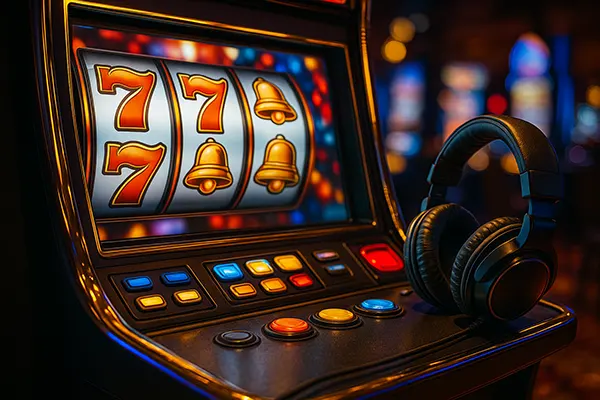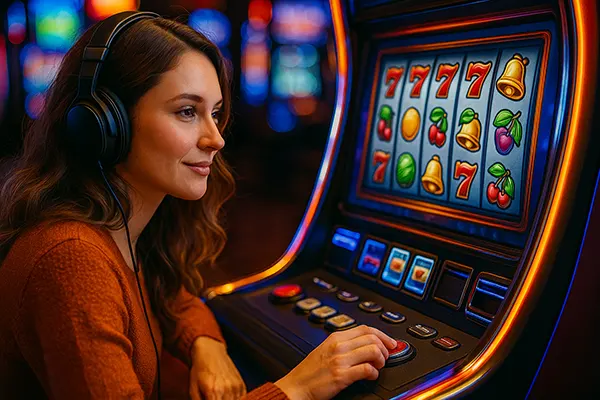Music and Sound in Slots: How Audio Shapes Player Behaviour

Sound has become a central component of modern slot design, influencing players far beyond simple entertainment. As game development technologies evolve, developers in 2025 are using dynamic audio engines and AI-driven adaptive soundtracks to enhance engagement, retention, and overall enjoyment. Understanding the psychological impact of audio helps explain why music and sound effects are so effective in shaping player behaviour within digital gambling environments.
The Psychological Power of Sound Design
The brain reacts to sound within milliseconds, making it a potent trigger for emotion and motivation. Slot designers use this fact to create audio experiences that reinforce positive feelings and reward anticipation. The familiar chime of spinning reels, subtle background melodies, and escalating tunes during bonus rounds all work together to create an emotional loop that encourages continued play.
Studies in behavioural psychology confirm that sound can stimulate the brain’s reward system in the same way as visual cues or tangible rewards. In slot games, each winning tone activates dopamine pathways, creating an association between success and sound. This mechanism can lead players to repeat behaviour unconsciously, drawn by the satisfaction that each sound delivers.
In 2025, most major software providers, including NetEnt, Microgaming, and Play’n GO, invest heavily in audio engineering. Their approach involves testing multiple sound layers to ensure balance—keeping excitement high while avoiding sensory overload. The result is a seamless blend of sound and action that holds a player’s attention without becoming overwhelming.
Emotional and Behavioural Influence
Every musical choice in a slot is intentional. Uplifting tempos promote enthusiasm, while slower ambient tones create a calm, immersive experience. Developers adjust tempo, rhythm, and pitch depending on the gameplay phase: faster music during free spins, and softer melodies between rounds. This fine-tuning directly impacts player focus and decision-making speed.
Some studios use adaptive sound algorithms that analyse player behaviour in real time. For instance, when a player increases their bet or enters a bonus round, the soundtrack automatically shifts to match the emotional intensity. This technique not only deepens immersion but also subtly encourages risk-taking and longer playing sessions.
Music genres vary by target audience. Scandinavian developers often use folk-inspired motifs, while Asian markets favour melodic progressions with traditional instruments. This localisation of sound has proven to increase player satisfaction by connecting emotionally through cultural familiarity.
Technological Advances in 2025
Modern slot games are built with advanced audio engines capable of producing high-quality, spatially dynamic sound. In 2025, studios are integrating Dolby Atmos-style layering, allowing sound effects to move realistically across stereo fields, creating a three-dimensional experience. Players using high-end headphones or gaming chairs with vibration feedback can feel the game’s rhythm both audibly and physically.
Artificial intelligence also plays a growing role. AI-driven systems can now compose unique background scores that evolve according to gameplay history. If a player prefers certain rhythms or reacts positively to specific tones, the algorithm subtly personalises the soundtrack, creating a distinct emotional environment for each session.
Moreover, cross-platform integration ensures that the same sound quality is maintained across mobile, desktop, and VR formats. Consistency of audio feedback helps players recognise brand identity—each provider’s sound signature becomes part of its reputation and marketing strategy.
Sound as Part of Responsible Game Design
With innovation comes responsibility. Regulators and developers increasingly recognise the role of sound in influencing player behaviour, including the potential for excessive engagement. In Denmark and other European markets, new 2025 guidelines encourage developers to moderate reward sounds to prevent misleading perceptions of wins, particularly in near-miss situations.
Responsible design now includes “sound transparency,” meaning developers must ensure that victory jingles match the actual outcome. For instance, small wins that are lower than the bet amount can no longer be accompanied by celebratory fanfare. This change aims to maintain honesty and reduce addictive play patterns.
Additionally, some casinos introduce “audio wellness” options, allowing players to adjust sound intensity or mute reward tones. These features promote healthier gaming habits by letting players control the emotional effect of sound without compromising overall enjoyment or immersion.

The Future of Audio in Slot Development
The next generation of slot sound design will likely focus on emotional realism rather than volume or complexity. Developers are experimenting with binaural sound and neurofeedback systems that respond directly to a player’s physiological state—such as heart rate or stress level—creating a deeply personalised gaming experience.
Collaborations between gaming studios and professional composers are also becoming standard practice. Companies like Pragmatic Play and Yggdrasil have begun working with film and television musicians to achieve cinematic depth, transforming slot sessions into narrative experiences. This trend positions audio not merely as an accessory but as a storytelling element within gameplay.
By 2030, experts predict that immersive sound environments will merge with augmented reality technologies, allowing players to interact with slot elements through voice and gesture. The role of audio will expand beyond background music—it will become a primary tool for feedback, navigation, and emotional connection.
Conclusion of Experience
Music and sound are no longer secondary features in slot development—they are core elements shaping how players think, feel, and behave. Their psychological and technological evolution continues to redefine what makes a game engaging. As the industry moves toward more ethical and immersive design standards, audio will remain a bridge between human emotion and digital entertainment, guiding the player’s experience with every beat and tone.
Understanding the importance of sound helps both developers and players appreciate the artistry behind modern slot design. In a world driven by visual overload, it is often the subtle melody or resonant chime that leaves the deepest impression, turning a simple spin into a lasting memory.
Ultimately, the true success of slot sound design lies in balance—where excitement meets comfort, and where music not only entertains but also informs and respects the player’s experience.
